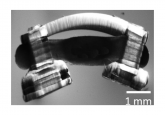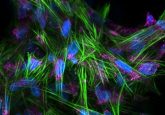Hydrogel-based sensors could be 3D printed directly onto human organs

CREDIT: Zhijie Zhu, University of Minnesota
Researchers have developed a novel 3D printing method, which could allow hydrogel-based sensors to be printed directly onto moving, living human organs. Scientists from the University of Minnesota (MN, USA) have developed a novel in situ 3D printing method with the ability to estimate surface motion and deformation in real time. The technique allowed them to directly print a hydrogel-based sensor onto a continuously inflating and deflating pig lung. Current 3D printing methods function by producing an object based on a set design, which is then transferred to the biological target. This, therefore, means that they fall short when applied...





